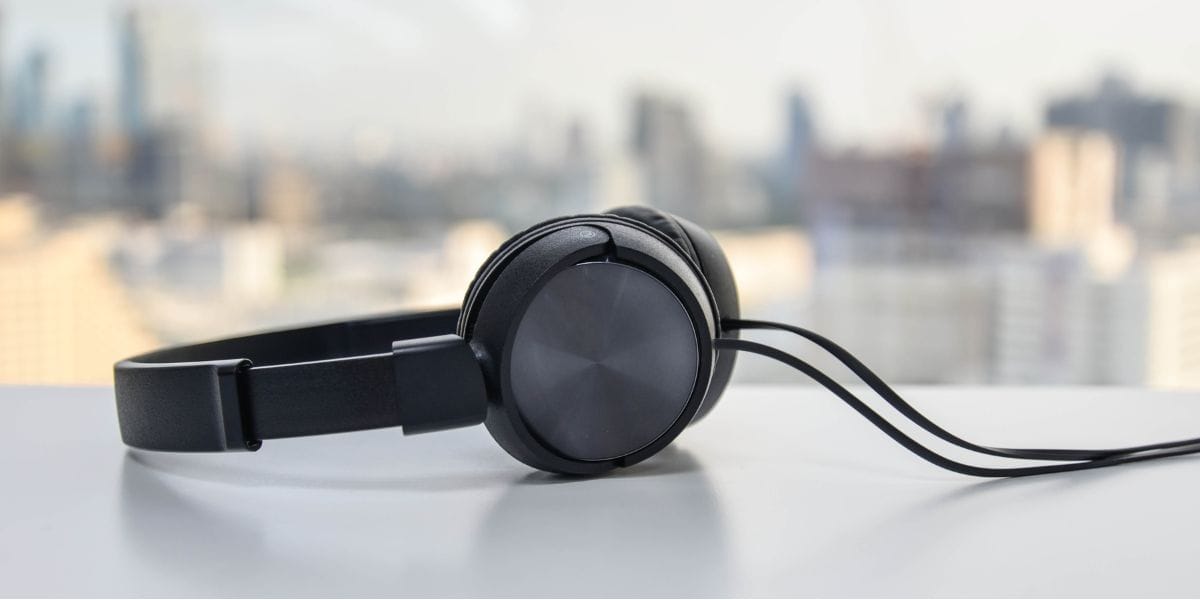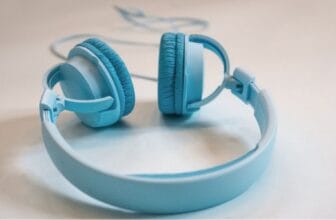
What’s the Difference Between Over-Ear and On-Ear Headphones? A Detailed Guide to Making the Right Choice
When choosing headphones, you’ve likely come across the terms “over-ear” and “on-ear.” But what exactly do these terms mean, and how can they affect your listening experience? Whether you’re an audiophile, a casual listener, or just shopping for headphones to use at the gym or while traveling, understanding these differences can help you make the best choice.
In this comprehensive guide, we’ll explore the critical differences between over-ear and on-ear headphones, looking closely at comfort, sound quality, portability, durability, and value for money. Let’s dive in!
Over-Ear vs. On-Ear Headphones: Understanding the Basics
Before we compare specific features, let’s quickly clarify what each headphone type is:
Over-Ear Headphones
- Also known as: Circumaural headphones
- Design: Large ear cups completely surrounding your ears
- Typical use: Studio sessions, gaming, home listening, travel (noise cancellation)
On-Ear Headphones
- Also known as: Supra-aural headphones
- Design: Smaller ear cups resting directly on your ears
- Typical use: Everyday casual listening, commuting, exercising, portability-focused scenarios
Now that you have a clearer picture, let’s delve into each category more thoroughly.
1. Design Differences: What Makes Them Unique?
The fundamental difference lies in how these headphones interact physically with your ears.
Over-Ear Design:
- Large ear cups fully enclose your ears.
- Typically bulkier with thicker padding.
- Often include noise cancellation due to their enclosed design.
On-Ear Design:
- Smaller, compact cups rest directly on your outer ears.
- Lightweight and usually foldable.
- Less effective at passive noise isolation but highly portable.
Example:
The Sony WH-1000XM5 (over-ear) offers excellent noise cancellation, ideal for travelers. Meanwhile, the Beats Solo3 Wireless (on-ear) is compact and lightweight, perfect for everyday commutes.
2. Comfort Comparison: How Do They Feel?
Comfort can make or break your headphone experience, especially during extended listening sessions.
Over-Ear Comfort:
- Distribute weight evenly around ears.
- Less pressure on ears, reducing fatigue.
- Excellent for long listening sessions at home or work.
Pros:
- Great comfort for prolonged usage.
- More suitable for people wearing glasses.
Cons:
- Heavier and bulkier, potentially causing heat build-up around ears.
On-Ear Comfort:
- Lightweight and less bulky.
- Easier to wear when moving around.
Pros:
- Light and compact; easy to wear on-the-go.
Cons:
- Can put direct pressure on ears, leading to discomfort over time.
Example:
If you wear headphones for extended periods (4+ hours), over-ear models like the Bose QuietComfort 45 might feel more comfortable. But if you prefer short usage intervals or portability, on-ear models like the Jabra Elite 45h could suit you better.
3. Sound Quality: Which Offers Superior Audio?
Sound quality is often a significant deciding factor. While both headphone types can deliver great audio, subtle differences can influence your choice.
Over-Ear Sound Quality:
- Larger drivers produce deeper bass, broader soundstage, and richer sound.
- Better passive and active noise isolation enhances audio clarity.
Best for:
- Audiophiles, musicians, gamers, and those prioritizing detailed sound.
On-Ear Sound Quality:
- Smaller drivers can limit bass depth and audio detail slightly.
- Less isolation, making them better suited for casual listening or those wanting environmental awareness.
Best for:
- Casual listeners, commuters, or those needing to remain somewhat aware of surroundings.
Example:
Over-ear headphones like Sennheiser HD 660S offer audiophile-grade sound ideal for serious listening sessions. On-ear models, like the Marshall Major IV, deliver impressive sound quality in a compact package.
4. Portability and Convenience: What’s Easier to Carry Around?
How you plan to use your headphones affects which type suits you best, especially regarding portability.
Over-Ear Portability:
- Often bulkier and less travel-friendly.
- Some models fold flat for easier storage but typically require more space.
Best for:
- Stationary usage at home, office, or airplane travel with carrying cases.
On-Ear Portability:
- Highly compact and foldable.
- Perfect for tossing into backpacks, gym bags, or purses.
Best for:
- Active lifestyles, commuters, and gym-goers who want hassle-free portability.
Example:
On-ear headphones like the Beats Solo3 Wireless are incredibly travel-friendly, folding neatly for compact storage. Over-ear models such as the Sony WH-1000XM5 usually require a dedicated carrying case due to their size.
5. Durability and Build Quality: Which Lasts Longer?
The longevity of your headphones depends significantly on their build quality and intended use.
Over-Ear Durability:
- Typically robust and built to withstand long-term use.
- Higher-end models use metal components and reinforced materials.
On-Ear Durability:
- Lightweight designs may feel less robust.
- More susceptible to accidental damage if carried without protective cases.
Example:
Brands like Audio-Technica and Sony produce durable over-ear headphones that can last many years, while budget on-ear models may require gentler handling.
6. Noise Cancellation and Ambient Awareness
Noise cancellation varies significantly between headphone types and is crucial depending on your environment.
Over-Ear Noise Cancellation:
- Superior passive and active noise cancellation due to complete ear enclosure.
- Ideal for noisy environments (flights, offices, crowded areas).
On-Ear Ambient Awareness:
- Limited noise cancellation allows for situational awareness.
- Suitable for commuters, joggers, and public settings where awareness is essential.
Example:
The Bose Noise Cancelling Headphones 700 (over-ear) excel in canceling background noise, while Marshall Major IV (on-ear) lets ambient sound through, helpful during outdoor activities.
7. Price and Value for Money
Budget often dictates buying decisions. Here’s how pricing typically breaks down:
Over-Ear Headphone Pricing:
- Generally more expensive, especially with advanced features like active noise cancellation or premium materials.
- Higher-priced models typically offer superior sound, durability, and comfort.
On-Ear Headphone Pricing:
- Usually more affordable, even for high-quality models.
- Good value for casual users or those on tighter budgets.
Example:
Premium over-ear headphones like Apple AirPods Max can cost significantly more due to their enhanced features. In comparison, affordable yet reliable on-ear headphones like the Jabra Elite 45h offer excellent value for casual listening.
Common FAQs About Over-Ear and On-Ear Headphones
Are over-ear headphones better for your ears?
Generally, yes. Over-ear headphones cause less direct pressure and are typically safer for prolonged listening at moderate volumes.
Which headphones are better for exercise?
On-ear headphones tend to be better suited due to their lighter weight and compact design. However, earbuds or in-ear models typically excel here.
What are the disadvantages of over-ear headphones?
Main disadvantages include bulkiness, reduced portability, and potential heat build-up around ears over time.
Final Thoughts: Choosing the Right Headphones for Your Needs
Ultimately, deciding between over-ear and on-ear headphones boils down to personal preference and intended usage. If you value immersive sound quality, noise isolation, and comfort for extended sessions, over-ear headphones are your best bet. However, if you prioritize portability, lightweight convenience, and casual use, on-ear headphones might be your ideal companion.
Take a moment to consider your daily routine and preferences carefully. Ask yourself:
- Where will I primarily use my headphones? (At home, on the go, gym, work)
- How long will I typically wear them at a stretch?
- Do I prioritize sound quality or portability?
- What is my budget?
By answering these questions, you’ll make an informed choice tailored perfectly to your lifestyle.

I am a USMC Veteran who worked with a Lot of computers and Technology while I was in. I became hooked and learned a lot in my 20 years.
At my store, I am passionate about bringing you the latest tech products that enhance your everyday life. Our mission is to provide quality, innovation, and value, making sure you find the perfect gadgets to fit your needs. Thanks for Your Support.. Larry Mac





